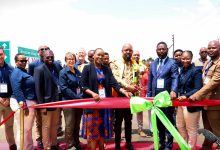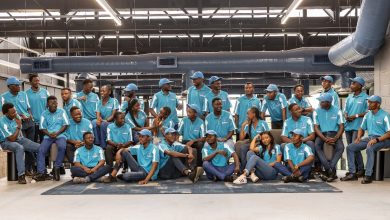Sibanye-Stillwater scores again as the Springbok solar PV project attains commercial operation

Sibanye-Stillwater’s first solar wheeling project, the Springbok solar photovoltaic project (Springbok solar PV project) located in the Free State Province in South Africa, has achieved commercial operation. This is a further milestone in the establishment of Sibanye-Stillwater’s portfolio of privately developed renewable energy projects.
The Springbok solar PV project is a 150 megawatt alternating current (MWac)1 (representing 195 MWp in peak direct current) solar project developed and financed by the SOLA Group, a South African Independent Power Producer (IPP). Sibanye-Stillwater is an anchor off-taker of the project and will procure 75MW (50%) of the plant’s capacity for a 10-year period, with an option to extend the duration through a Power Purchase Agreement (PPA) with the SOLA Group.
This project is the second renewable energy project supplying Sibanye-Stillwater’s SA operations to achieve commercial operation in 2025. Together with the 89MW Castle wind farm announced in April 2025, this project has brought 164MW of renewable energy projects involving Sibanye-Stillwater online in 2025.
Key project benefits include:
- Cost saving relative to prevailing Eskom utility rates and escalating at CPI, resulting in expected annual cost saving for our SA operations of more than R60 million for this project alone (2025 real terms, pre-tax)
- Expected annual renewable energy supply equivalent to ~4% of Sibanye-Stillwater’s energy requirements in South Africa
- An immediate reduction of 229,000* tCO2e annually (3.6% of Group scope 1 and 2 emissions) and mitigation of future, indirect carbon tax liabilities
Richard Stewart, CEO of Sibanye-Stillwater, stated: “Achieving commercial operation of the Springbok solar project is another milestone in our journey to energy independence and decarbonisation. This is the second project to achieve commercial operation in our 407MW portfolio of contracted renewable energy projects,
contributing to our goal of achieving carbon neutrality by 2040. We would like to thank our partners for effectively managing the construction and start-up, securing our offtake.”
*Conversion factor used: 1.04 tCO2e/MWh
- In renewable energy projects like solar, direct current (DC) megawatts (195MWp for Springbok solar project) refer to the maximum potential power output of the panels, while alternating current (AC) megawatts (150MW for Springbok Solar project) refer to the actual usable power that can be delivered to a facility or the electrical grid after conversion. The AC rating is always lower than the DC rating due to energy loss during the conversion process






